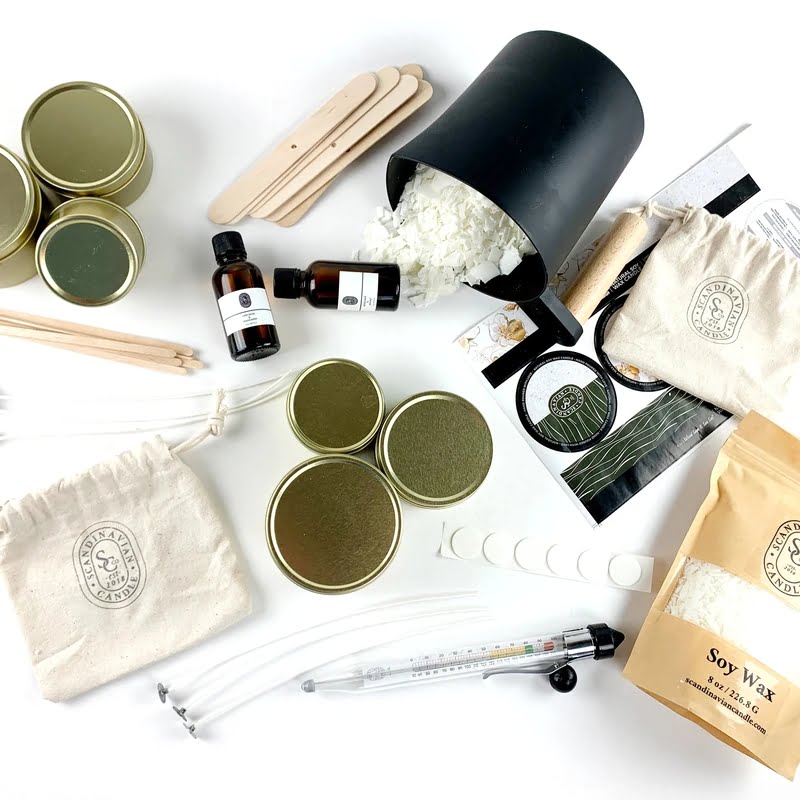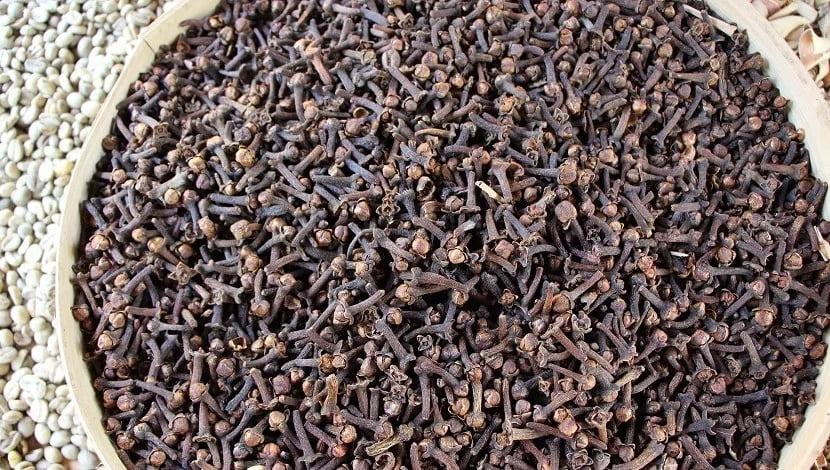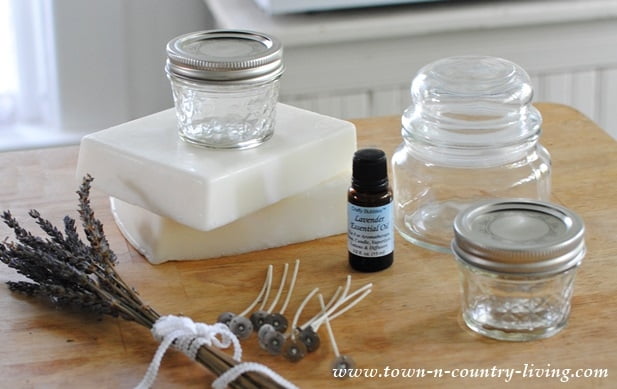The art of candle making has been practiced for centuries, bringing warmth, fragrance, and ambiance to countless homes and spaces. Whether you’re a seasoned candle maker or a beginner looking to try your hand at this craft, one of the most crucial decisions you will make is selecting the right wax for your candles.
The choice of wax plays a significant role in determining the overall quality and performance of the finished product. From soy wax to beeswax, paraffin wax to coconut wax, there are various options available that offer unique characteristics and advantages.
Choosing the appropriate wax for candle making is vital for achieving the desired results. The type of wax used can affect everything from burn time and scent throw to appearance and eco-friendliness. Each type of wax has its own set of properties and benefits that can enhance the overall candle-making experience. Understanding these differences will help you make an informed decision and create candles that meet your expectations.
For those seeking an eco-friendly option, soy wax is an excellent choice. Soy wax is derived from soybean oil, making it a renewable resource that supports sustainable farming practices. It burns cleanly with minimal soot and offers excellent scent throw, allowing the fragrance to fill a room effortlessly.
On the other hand, beeswax, obtained from honeybees, boasts natural properties that purify the air when burned while providing a longer burn time than many other waxes. Its sweet, honey-like scent adds a pleasant aroma to any space.
Importance of Wax Selection
When it comes to candle making, selecting the appropriate wax is crucial for achieving successful results and creating a high-quality final product. The choice of wax not only affects the candle’s appearance but also influences its burn time, scent throw, and overall performance. Here are some key reasons why wax selection is so important in candle making:
- Burn Time: The type of wax used greatly influences the candle’s burn time. Some waxes, like beeswax and soy wax, have longer burn times compared to others. This means that candles made with these waxes will last longer, providing hours of enjoyment for users.
- Scent Throw: Another significant factor impacted by wax selection is the scent throw of the candle. Certain waxes have excellent fragrance-holding capabilities, allowing them to release a strong and consistent aroma when lit. For example, soy wax is known for its ability to hold fragrances well, resulting in highly scented candles.
- Clean Burn: Selecting the right wax also contributes to achieving a clean burn with minimal soot or smoke production. Waxes like soy and beeswax tend to burn cleaner compared to paraffin wax due to their natural composition.
To make an informed decision regarding wax selection, it’s advisable for candle makers to consider their specific requirements and preferences. Factors such as eco-friendliness, sustainability, availability, and budget can also influence the choice of wax material used in candle making.
Some commonly used waxes for candle making include
– Soy Wax: Soy wax is derived from soybean oil and is widely chosen by candle makers due to its eco-friendly nature and biodegradability. It offers a clean burn with minimal soot and has an excellent fragrance-holding capacity.
– Beeswax: Beeswax is a natural option that not only produces a lovely honey-like scent when burned but also purifies the air by releasing negative ions. Additionally, candles made with beeswax have a longer burn time compared to other waxes.
– Paraffin Wax: Paraffin wax is commonly used in candle making due to its affordability and wide availability. However, it does come with potential health concerns as it is derived from petroleum.
– Coconut Wax: Coconut wax has gained popularity in recent years for its sustainable sourcing and attractive appearance. It offers an excellent scent throw and gives candles a smooth and creamy texture.
– Palm Wax: Palm wax is known for its beautiful crystalline finish, making it ideal for pillar candles, container candles, and taper candles. It has a natural aesthetic appeal and good burn qualities.
While these are some of the most popular waxes used in candle making, there are also specialty waxes available that offer unique properties for specific applications. From bayberry wax to jojoba wax, exploring these lesser-known options can open up new creative possibilities for candle makers.
Soy Wax
Soy wax has become increasingly popular in the art of candle making due to its numerous benefits. One of the main advantages of using soy wax is its eco-friendly nature. Soy wax is made from soybeans, which are a renewable resource. This makes it a sustainable option for those who are conscious of their environmental impact. In addition, soy wax is biodegradable, meaning that it can be easily broken down by natural processes.
Another benefit of soy wax is its clean burn. When burning a soy wax candle, you don’t have to worry about harmful toxins or soot being released into the air. Soy wax burns cleaner and with less soot than other types of waxes, such as paraffin wax. This not only promotes better indoor air quality but also prevents any black residue from appearing on your walls and furniture.
Furthermore, soy wax has the ability to hold fragrance exceptionally well. This means that when you use essential oils or fragrance oils in your candle making process, the scent will be long-lasting and consistent throughout the entire burn time. Soy wax has a higher scent throw compared to other waxes, allowing you to fully enjoy the aromatic experience provided by your candles.
Overall, choosing soy wax for candle making provides significant benefits such as being environmentally friendly, producing a clean burn, and ensuring a strong fragrance throw. Its versatility also allows for easy customization through coloring and adding different scents or essential oils. Whether you are an experienced candle maker or just starting out, considering soy wax as your preferred choice can help you create high-quality candles that not only smell great but also align with your eco-conscious values.
Beeswax
Beeswax, a natural and versatile wax, is a popular choice for candle making due to its unique properties and numerous advantages. From its delightful natural scent to its long burn time, beeswax offers several benefits that make it stand out among other waxes. Additionally, beeswax has the remarkable ability to purify the air when it burns, making it an excellent choice for those seeking a holistic and environmentally friendly candle experience.
Natural Scent
One of the main reasons why candle makers choose beeswax is its delightful natural scent. Beeswax candles emit a distinct aroma of honey, which adds an inviting and cozy atmosphere to any space. This natural fragrance not only enhances the ambiance but also creates a soothing environment that many find comforting.
Long Burn Time
When it comes to burn time, beeswax candles excel compared to other types of candles. Due to its high melting point and dense composition, beeswax burns slowly and efficiently. This means that beeswax candles can provide hours upon hours of luminous light and enjoyable fragrance before needing replacement.
Air Purification
An exceptional characteristic of beeswax candles is their ability to purify the air while burning. When lit, beeswax releases negative ions into the surroundings that attract positively charged particles like dust, pollen, mold spores, and even bacteria or viruses present in the air. As these particles are drawn towards the burning flame, they become too heavy to stay airborne and eventually fall out of circulation. Consequently, this helps improve indoor air quality by reducing allergens and pollutants.
Candle makers who prioritize quality often gravitate towards using beeswax due to these advantageous qualities. Whether you enjoy the naturally pleasant scent it emits or appreciate its ability to cleanse your environment while providing long-lasting illumination, there’s no denying that beeswax is an excellent choice for candle making.
Paraffin Wax
Paraffin wax is one of the most commonly used waxes in candle making. It offers several advantages that make it a popular choice for candle makers around the world. However, it is essential to consider both the pros and cons of using paraffin wax to make informed decisions about its suitability for your candle-making projects.
Pros:
- Affordability: One of the significant advantages of paraffin wax is its affordability. It is comparatively cheaper than other types of waxes available in the market, making it an ideal choice for those on a tight budget or mass production.
- Wide Availability: Paraffin wax is easily accessible and widely available in various forms, including blocks, flakes, or pellets. This accessibility makes it convenient for candle makers to find and purchase paraffin wax without much hassle.
Cons:
- Potential Health Concerns: One drawback associated with paraffin wax is its potential health concerns when burned. Paraffin wax is derived from petroleum, which can release toxic chemicals such as benzene and toluene into the air when burned. Long-term exposure to these chemicals may pose health risks, especially in poorly ventilated spaces.
- Limited Eco-Friendliness: Unlike other natural waxes like soy or beeswax, paraffin wax is not considered environmentally friendly. As a petroleum byproduct, its extraction and production contribute to carbon emissions and non-renewable resource consumption.
Despite its affordability and availability, some individuals prefer alternative waxes due to these potential health concerns and environmental impact surrounding paraffin wax usage in candle-making endeavors.
When choosing a wax for your candles, it’s crucial to weigh these pros and cons against your specific needs and preferences as a candle maker. Consider factors such as cost, accessibility, environmental impact, and health concerns before making a final decision on whether paraffin wax is the right choice for your candle-making projects.
Coconut Wax
Coconut wax has become increasingly popular among candle makers due to its unique characteristics and benefits. One of the main reasons for this popularity is its sustainable sourcing. Coconut wax is derived from the meat of coconuts, which are a renewable resource. This makes it an eco-friendly choice for those who prioritize sustainability in their candle making process.
In addition to its sustainability, coconut wax also offers a beautiful appearance when used in candles. It has a creamy white color that adds a touch of elegance to any candle design. Many candle makers appreciate this aesthetic appeal and use coconut wax specifically for its visual impact.
Furthermore, coconut wax is known for its excellent scent throw. It has the ability to hold fragrance oils effectively, resulting in strong and long-lasting scents when the candle is burned. This makes it an ideal choice for those who want their candles to fill a room with delightful aromas.
| Feature | Benefit |
|---|---|
| Sustainable sourcing | Eco-friendly choice |
| Beautiful appearance | Elegant and visually appealing candles |
| Excellent scent throw | Strong and long-lasting fragrance when burned |
Overall, coconut wax has gained popularity in the candle making industry due to its sustainable sourcing practices, beautiful appearance, and impressive scent throw capabilities. As more people become conscious of environmental sustainability while still wanting high-quality candles, coconut wax provides an excellent choice for both candle makers and consumers.
Palm Wax
Unique Characteristics of Palm Wax
Palm wax is derived from the palm tree, specifically the oil palm tree, and it has gained popularity as a versatile option for candle making. One of the unique characteristics of palm wax is its natural crystalline structure. When cooled and solidified, palm wax forms beautiful crystalline patterns on the surface of candles, adding an elegant touch to any candle design. These natural patterns make each palm wax candle one-of-a-kind and visually appealing.
Another advantage of using palm wax is its excellent burn properties. Palm wax has a relatively high melting point compared to other waxes, resulting in candles that have a longer burn time. This makes palm wax ideal for pillar candles or candles that need to withstand warmer conditions. Additionally, palm wax has a low shrinkage rate during cooling, which minimizes the chances of cracks forming on the candle surface.
Suitability for Different Candle Types
Palm wax is highly versatile and can be used in various types of candles, including pillar candles, container candles, and taper candles. For pillar candles, which require stability and slow burning, palm wax’s ability to withstand higher temperatures and its long burn time are advantageous. Palm wax also produces minimal soot when burned, providing a clean burning experience.
In container candles, palm wax performs exceptionally well due to its excellent adhesion properties. It adheres firmly to the sides of containers and creates a smooth finish without any tunneling or frosting issues. The beautiful crystalline patterns formed by palm wax also add an aesthetic appeal when viewed through transparent glass containers.
For taper candles, achieving a consistent drip-free burn is crucial. Palm wax delivers excellent results as it has good rigidity while maintaining flexibility during burning. This combination allows taper candles made with palm wax to stand tall without bending or drooping.
Overall, whether you’re making pillar candles for an elegant centerpiece or container candles for a cozy ambiance, or even taper candles for a special occasion, palm wax offers unique characteristics and suitability that make it an excellent choice for various candle types.
Blended Waxes
Blended waxes have become increasingly popular in candle making due to their ability to achieve specific candle characteristics that may not be present in a single type of wax. By combining different types of wax, candle makers can create custom blends that enhance the scent throw or burn time of their candles. Blended waxes offer a range of advantages that contribute to the overall quality and performance of the finished product.
One advantage of using blended waxes is the increased scent throw. Different types of wax have varying abilities to hold fragrance oils and release them when the candle is lit. By blending waxes with excellent fragrance retention properties, candle makers can create candles that emit a stronger and more long-lasting scent.
This is particularly beneficial for scented candles where the aroma is a key selling point. Customers will be delighted by the powerful and lingering fragrance that fills their space when they burn these candles.
Enhanced burn time is another advantage provided by blended waxes. Certain types of wax, such as soy wax, have inherently longer burn times compared to others like beeswax or paraffin wax. By blending these waxes together, candle makers can extend the overall burn time of their candles without sacrificing other desirable qualities. Candles with longer burn times are appealing to customers who want to enjoy their favorite scents for extended periods without having to replace them frequently.
| Advantages |
|---|
| Increased Scent Throw |
| Enhanced Burn Time |
Blended waxes allow for greater customization and flexibility in creating candles with desired characteristics. Candle makers can experiment with different ratios and combinations of waxes to find the perfect blend for their specific needs and preferences. Whether it’s a high fragrance throw, long burn time, or a combination of attributes, blended waxes provide the opportunity to fine-tune candles to meet customers’ expectations.
Specialty Waxes
Specialty waxes offer candle makers unique alternatives to the more commonly used waxes like soy, beeswax, paraffin, coconut, and palm wax. These lesser-known wax options, such as bayberry wax or jojoba wax, present their own set of properties and advantages that can elevate the candle making process and end result.
Bayberry wax is a rare and highly luxurious wax derived from the berries of the bayberry shrub. It is known for its beautiful natural green color and delightful scent.
Though it can be difficult to source and more expensive compared to other waxes, bayberry wax creates candles with a charming rustic appearance and a uniquely comforting fragrance. The natural scent of bayberry wax adds a touch of nostalgia, making it an excellent choice for creating candles during the holiday season or for those who appreciate traditional craftsmanship.
On the other hand, jojoba wax offers candle makers a unique alternative that is actually not derived from bees but rather from jojoba oil. This plant-based option is often used in candle making because it has a higher melting point compared to other vegetable waxes, allowing it to hold its shape well during burning.
Jojoba wax also boasts excellent stability and resistance to oxidation. Additionally, this odorless wax is known for enhancing fragrance throw in candles by blending seamlessly with essential oils.
Both bayberry wax and jojoba wax are suitable for various candle making applications depending on the desired effect and target market. While bayberry wax may be favored for its cultural significance and seasonal appeal, jojoba wax presents itself as an eco-friendly option without compromising on performance. Both specialty waxes allow candle makers to explore unique possibilities and create one-of-a-kind candles appreciated by aficionados seeking something beyond conventional choices.
Conclusion
In conclusion, the selection of the appropriate wax for candle making is crucial to achieve the best results. Throughout this article, we have explored various types of wax and their unique properties in order to understand how each can impact the final product.
Soy wax has emerged as a popular choice due to its eco-friendly nature, clean burn, and ability to hold fragrance effectively. On the other hand, beeswax brings added advantages such as a natural scent, long burn time, and air-purifying qualities. Paraffin wax may be more affordable and widely available but comes with potential health concerns.
Coconut wax has gained popularity for its sustainable sourcing, beautiful appearance, and excellent scent throw. Palm wax possesses unique characteristics that make it suitable for different candle types.
Blended waxes combine different types of wax to achieve specific characteristics like increased scent throw or enhanced burn time. Additionally, there are specialty waxes like bayberry wax or jojoba wax that offer their own unique properties for specific candle making applications.
As you embark on your candle making journey, I encourage you to experiment with different waxes to find your perfect match. Consider factors such as sustainability, burn time, fragrance hold, and appearance to select the most suitable option for your desired outcomes. Remember that each type of wax brings its own set of benefits and considerations, so don’t hesitate to explore new possibilities and techniques in order to create truly exceptional candles. Happy candle making.
Frequently Asked Questions
What is the best type of wax for candles?
The best type of wax for candles largely depends on personal preference and specific needs. However, one commonly regarded as the best is soy wax. Soy wax is a natural alternative to traditional paraffin wax, derived from soybeans.
It is known for its clean-burning properties, long burn times, and excellent scent throw. Additionally, soy wax has a lower melting point, which makes it easier to work with when making candles. Many candle enthusiasts also appreciate its renewable and eco-friendly nature, as it is biodegradable and comes from a sustainable source.
Should I use paraffin or soy wax for candles?
When deciding between paraffin or soy wax for candles, multiple factors come into play. Paraffin wax has been the traditional choice for many candle makers and continues to be widely used. It offers excellent fragrance retention and provides a smooth finish on candles.
Furthermore, paraffin wax tends to have a lower production cost compared to other types of waxes. On the other hand, if you prioritize sustainability and prefer natural products, soy wax might be the better option for you. As mentioned earlier, soy wax has several advantages like being biodegradable and derived from a renewable resource.
What wax to avoid in candles?
One type of wax that should generally be avoided in candles is gel wax – unless you have a specific purpose that calls for it. Gel wax is not technically true “wax” but rather polymer resin mixed with mineral oil or mineral spirits. While gel candles can offer beautiful visual effects such as transparency or embedding objects within them, they tend to have safety concerns associated with their use.
Gel candles are more prone to excessive heat generation during burning, increasing the risk of glass containers breaking or shattering unexpectedly due to thermal stress. Consequently, it is essential to exercise caution while using gel-based candles and ensure they are handled according to the manufacturer’s instructions for enhanced safety measures.

Welcome to my candle making blog! In this blog, I will be sharing my tips and tricks for making candles. I will also be sharing some of my favorite recipes.





